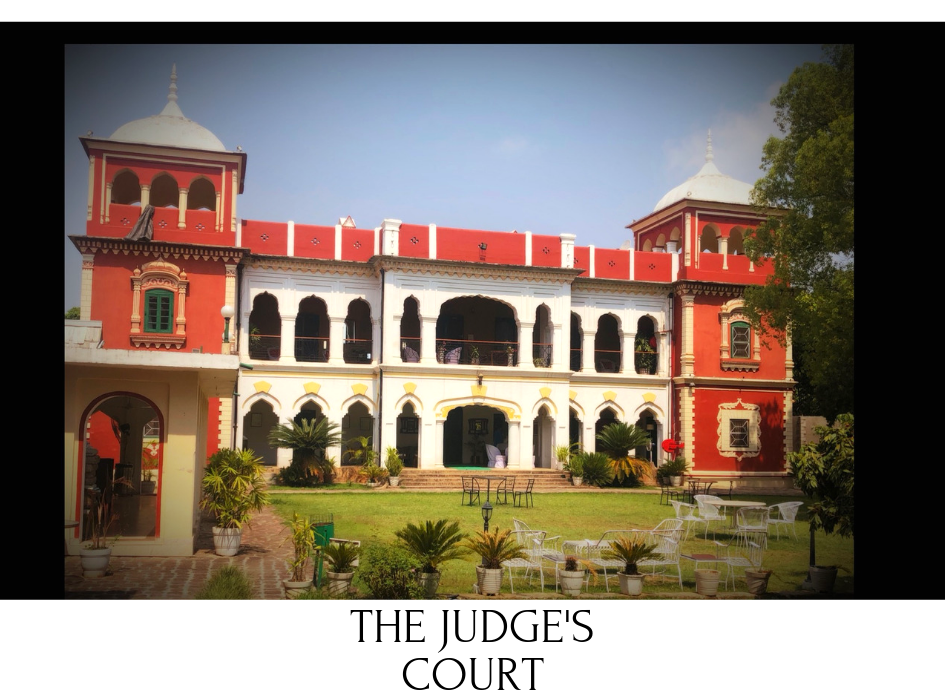
A narrow road lined with sparse bushes diverges off from the Kangra road leading to the indistinct village of Paragpur in Himachal Pradesh. Seldom would one wheel off on this trail as the road is meant to take home the village inhabitants and the travelers on a vacation for solitude in the heritage tucked away from the buzz of life.
A short steep up-climb winds up in front of a brick red building, a Manor laced with the lush of green and the mild scent of flowers. The air is pure, freshness abounds, time still, and a calming silence that gently cracks up to the playful chirping of the birds and the sweet hum of the Koel.
A blue pool in front of manor entrance seems more like a once-upon-a-time fountain than a swimming pool. The clear, aqua tiny pond is, nevertheless, a refreshing sight on the scorching sunny day, despite the hilly ground.
A step inside the heritage house opens to the senses of sight and smell, the pandora box of the European architecture. There’s a mingled polished teak wood aroma in the warmth of the air inside. I could visualize vague images of butlers strutting around the colonial bungalow a hundred years back instead of the local hospitality staff.

The heritage property is the residence of Justice Sir Jai Lal, who is now 84 years old, and was the then High Court Judge of Lahore before partition. The bungalow, which was his residence was infamously called ‘Judge Ki Kothi’ [Judge’s residence]. About ten years ago, this 113-year-old mansion was declared a heritage site and began drawing in extensive tourist traffic.
The mansion spreads over a sprawling 13 acre of land, which besides housing the Indo-Colonial country manor, also plants its own organic vegetables and fruit for consumption by the guests of the heritage resort. The heritage block houses 10 aristocratically furnished rooms while the side wings of the manor accommodate 16 tastefully embellished rooms in a similar empirical theme.
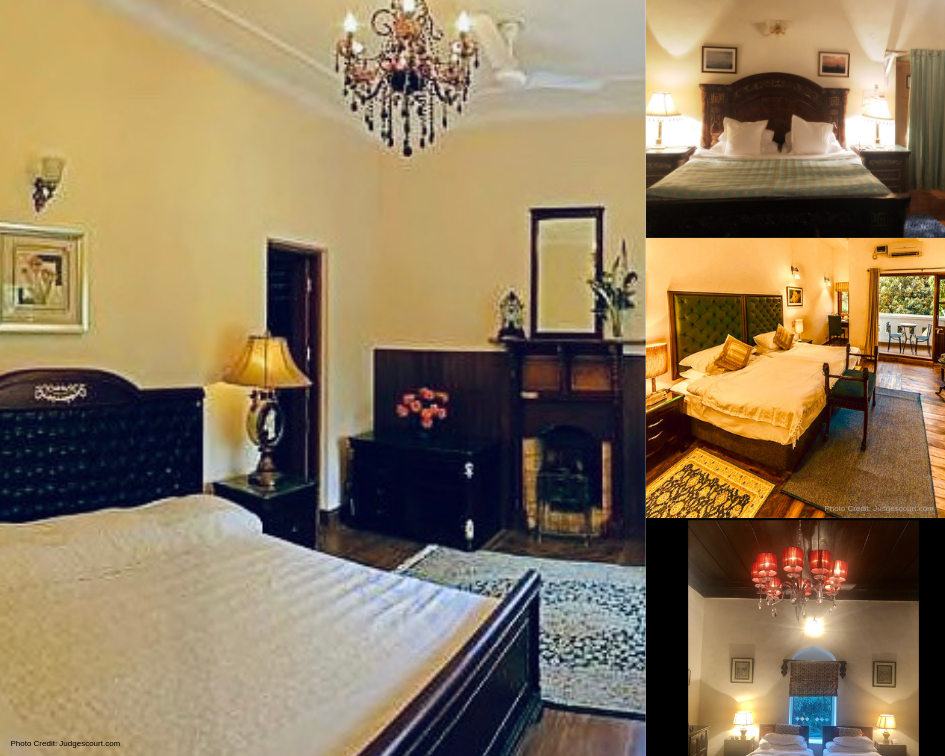
I got two accommodations booked- a suite named ‘Dhauladhar’ and an interconnected room for the boys named ‘Harding’. Once checked in, reaching the accommodations on the first floor meant a flight of thirteen regal wooden stairs partly covered with jute carpets. The treading had to be soft on the foot for the wood thudding loud with each footstep. A couple of stairs up felt like walking up the stairs of my Shimla boarding school lobby to the chapel- the same dark polished wood, rough carpet, the aroma of age-old wooden space and the cozy-stale smell of old furniture, taking one way back in time.
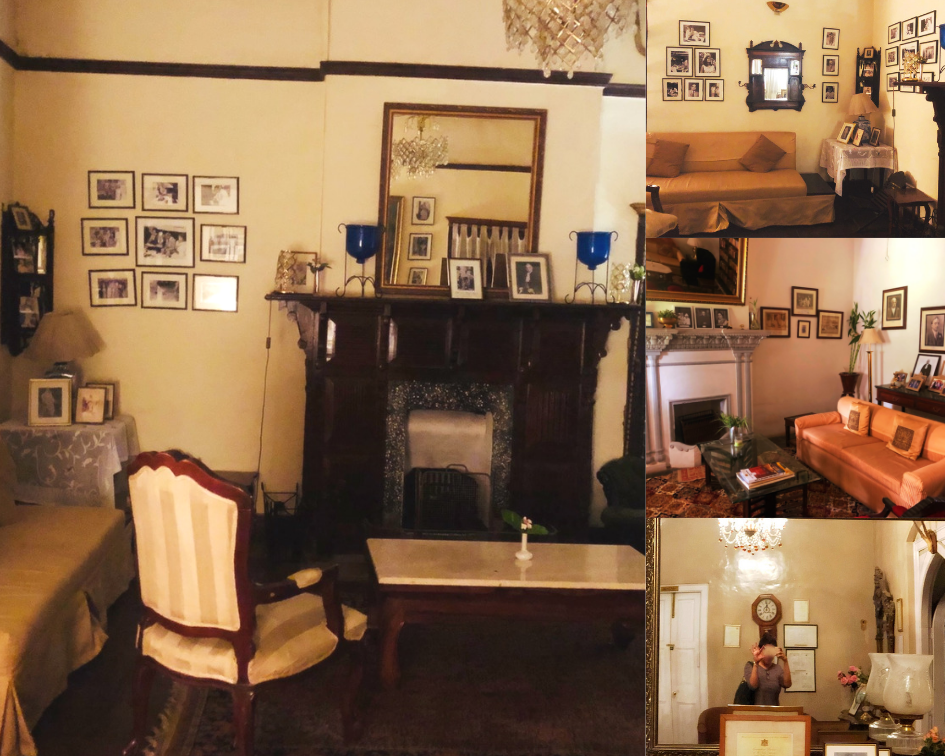
Each room, be it a lobby, living room or a bedroom is adorned with antique beds, mirrors, chest of drawers and settees. The vibrant colored delicate chandeliers in wine, maroon, indigo, bottle green, turquoise and gold colors, the colonial furniture, the fireplace, mantles with antique collection, coordinated bed and dressers, vintage patterned curtains with tassels and blinds, and Victorian armrest two-seaters in each room complete the fining living experience of the yesteryears.
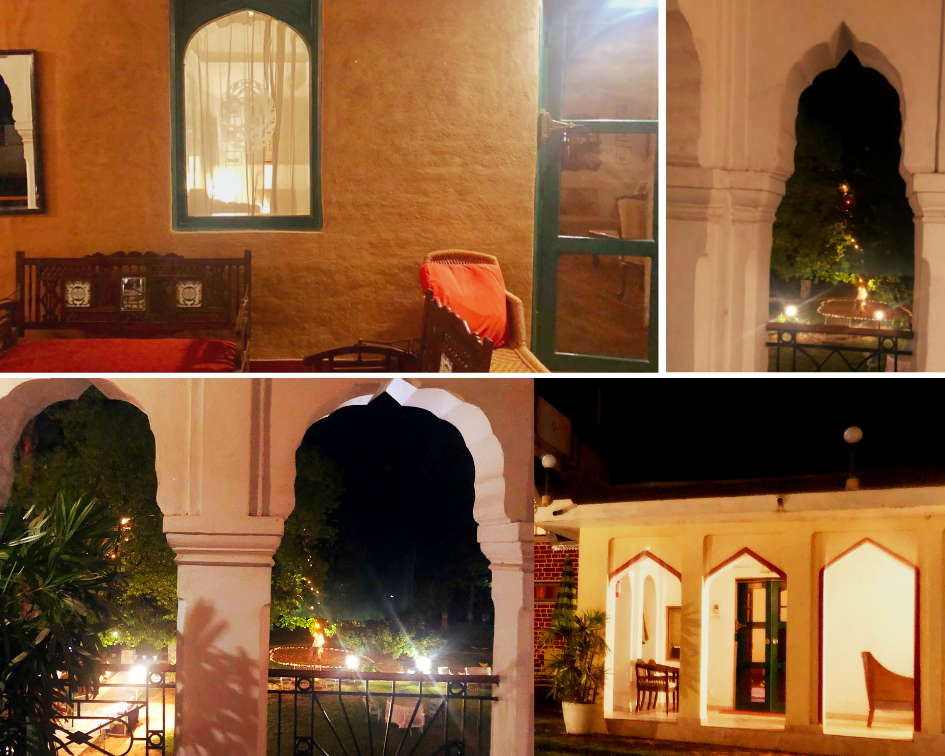
The verandahs plush with huge green plans set in brass and earthen pots lend a relaxed space welcoming a layback watch on the caned futons or a light meal or coffee and a game of cards on the round tables encircled with heavy decorative metal chairs. This space is perfect for watching the sun rise up and glow or gazing at the moon sending out silver light dimly illuminating the verandah with all lights off.
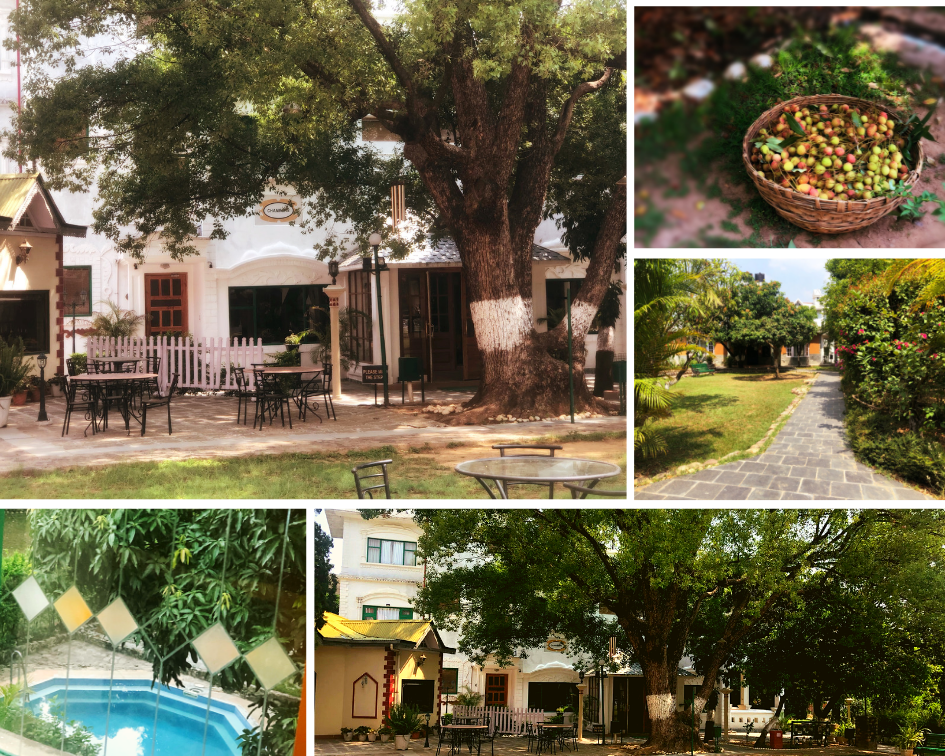
With the darkness setting in the lush green lawns and a well-manicured array of flowery bushes, the outdoor dining experience brings in the freshness and sweetness of fruits in the air. A faint sound of flute playing in the distance is unseen but sends in calming ripples of music that delightfully add on to the softening of the senses with the wine and the cocktails finishing off with luxurious buffet and desserts that include a platter of fresh handpicked litchi from the manor garden.
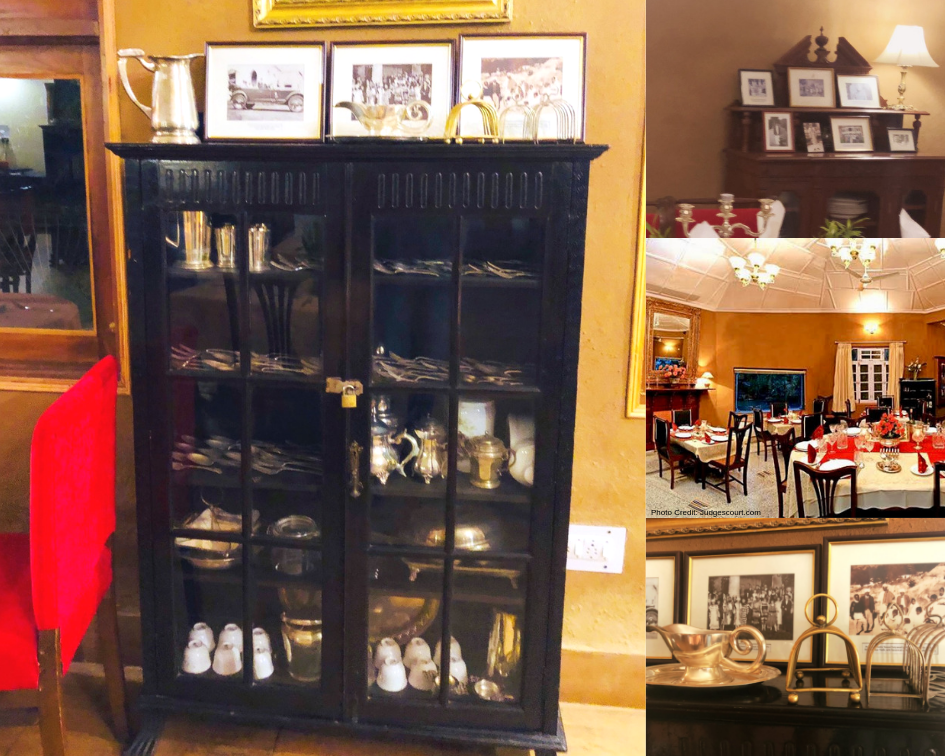
The old wooden roofs, polished and maintained, the Curios along with teak and marble consoles flaunting photographs, candle stands, and flower vases; the heavily adorned mirrors; and the china cupboards displaying the silver cutlery and fine bone china crockery give the dining area the splendor and grandiose with a touch of royalty.
A trip back from the Judge’s court feels like being back to the future from the ancient times that I almost seemed to belong to. Rejuvenation, relaxation of the senses, a feast on aristocracy and the nostalgia of leaving behind a world I must’ve lived in another lifetime tags along with vivid memories of having revisited history around the grandeur of the Judge’s Court.
